It’s 25 years since the war ended in Bosnia – and yet it still bears scars that no country should have to endure.
Sarajevo, Bosnia’s capital city, had never made it onto my radar until I started researching it for this trip. What I found was an incredibly interesting city with a harrowing past and indestructible resilience, and it was one of the places I was most looking forward to on the tour.
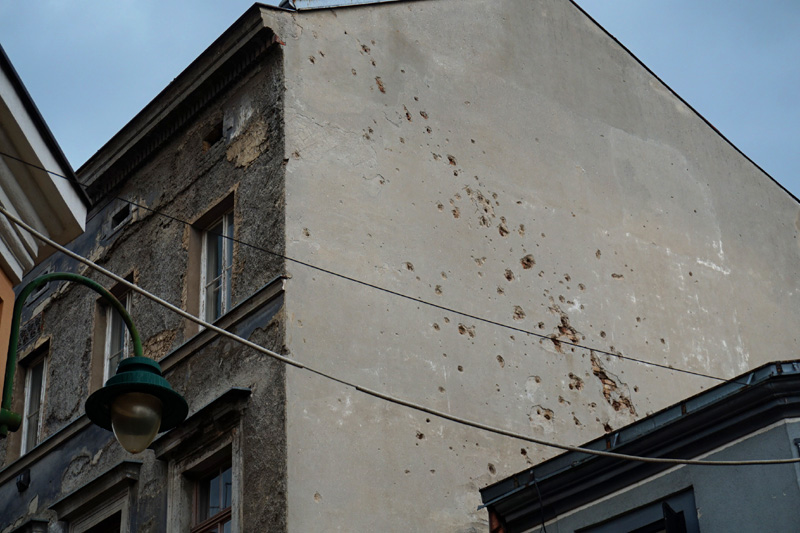
Buildings are still littered with bullet holes from attacks that showed the Bosniaks no mercy, but more heartbreaking is the scars laid on to the people. What’s even more shocking is many of these people are my age; this happened in my lifetime. They remember what it was like to live through war as children, and what it’s like to lose friends, family, even entire schools. I could have been one of them.
That’s why my first stop in the city was the War Childhood Museum.
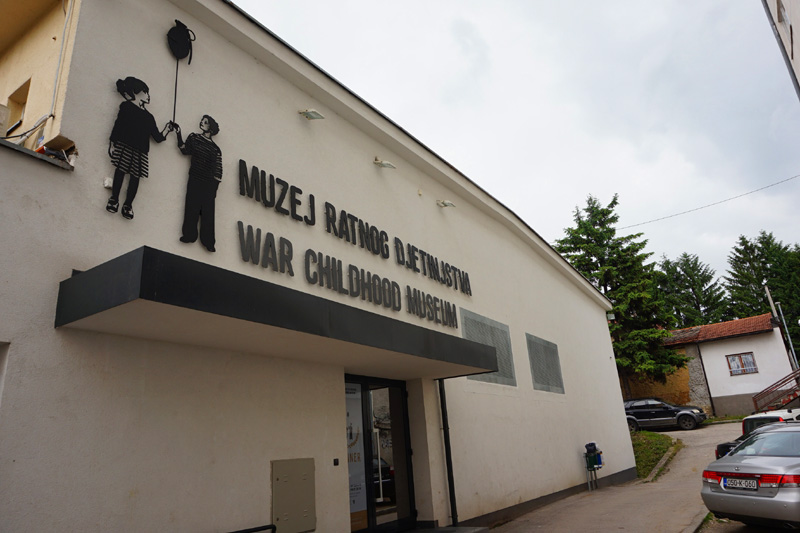
War Childhood Museum
The museum is full of items donated by children from the war, accompanied by a story from their life involving that item.
We read in silence, countless stories of children who endured more tragedy in those few years than most people experience in a lifetime. A story of one child who went to bed and woke up with his chalkboard next to his head, smashed by shrapnel. That chalkboard saved his life. A ball that brought joy to an entire neighbourhood because it was the first new toy those children had seen in years. It had the kid’s name on it, and they used it to remember him when he was shot. The last thing someone was given by his father before he disappeared. His body has never been found.
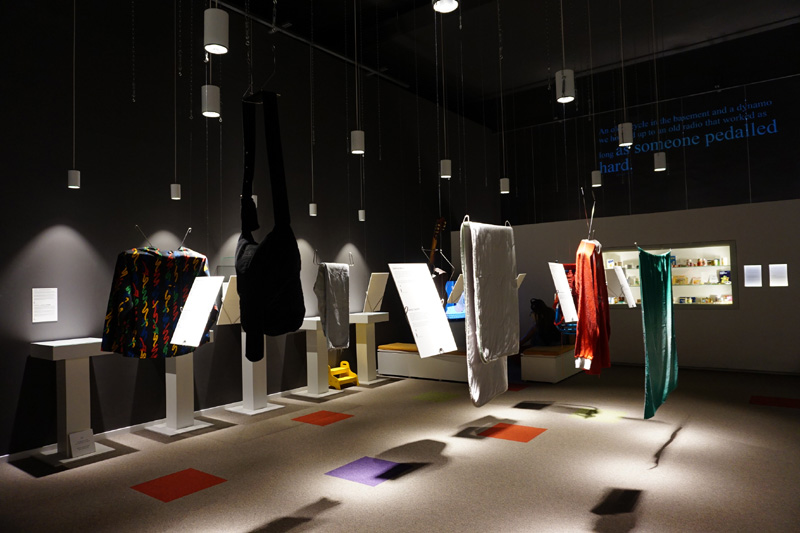
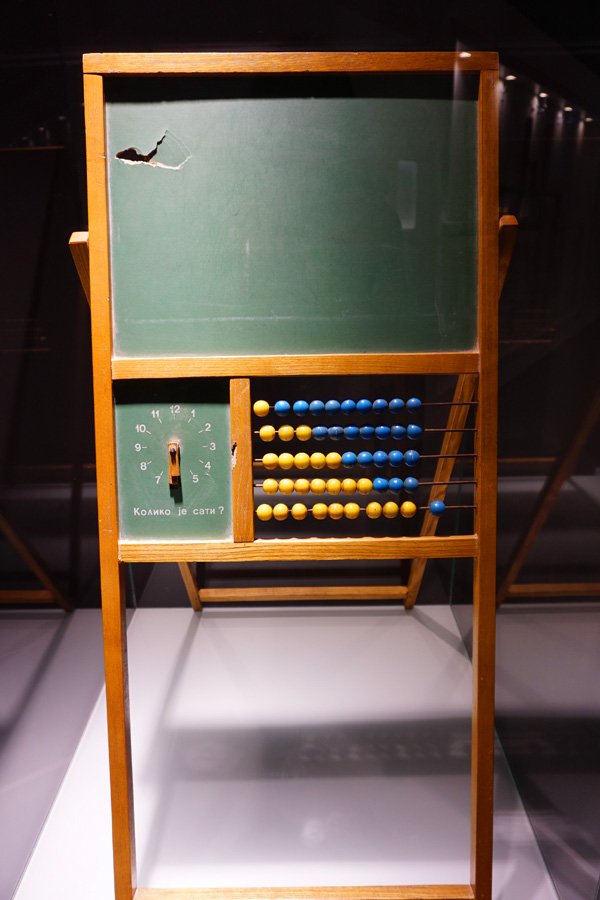
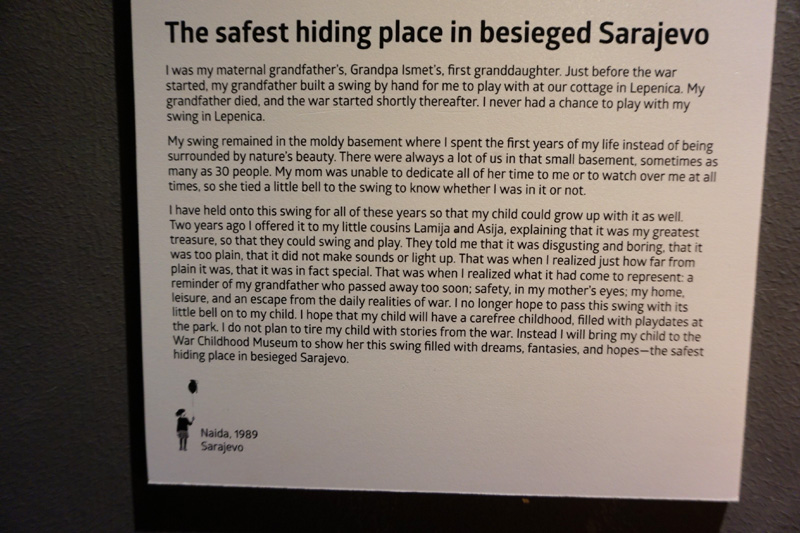
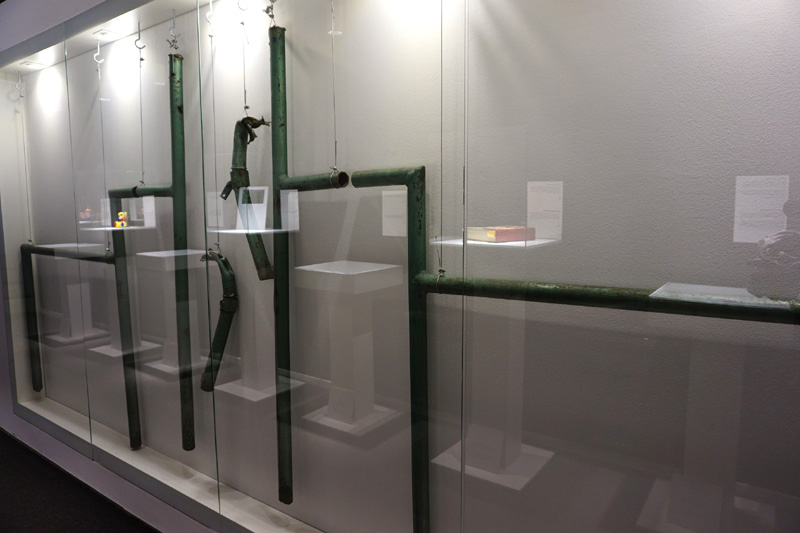
However, amongst the sadness, there was hope. Hope that something like this should never be repeated; hope that they would survive. It was our first sign of the resilience these people had; the determination to lead normal lives. It reminded me of Cambodia, and the kindness of people there.
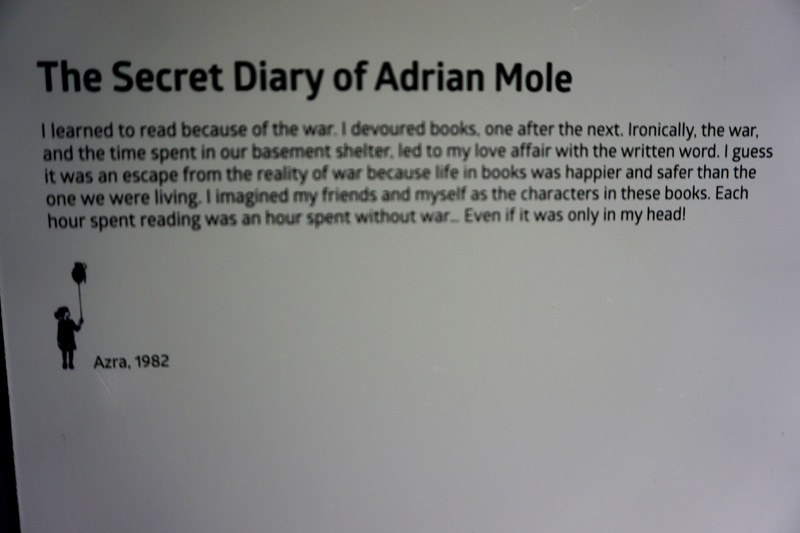
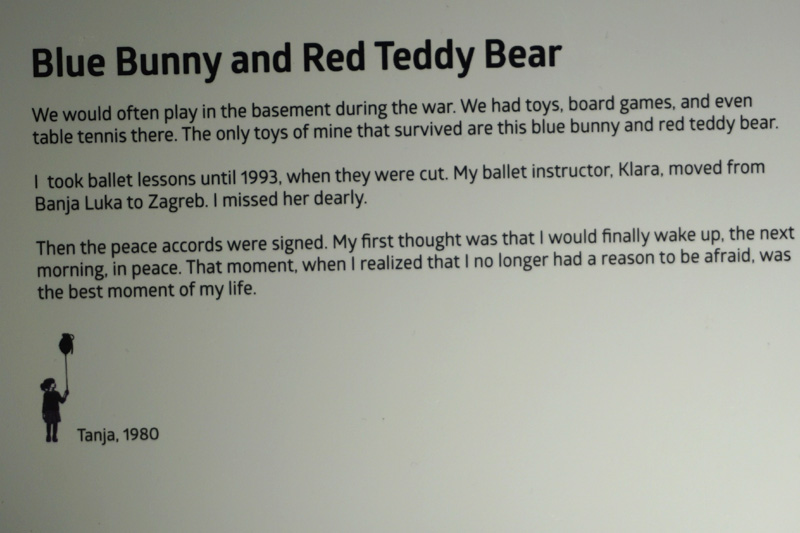
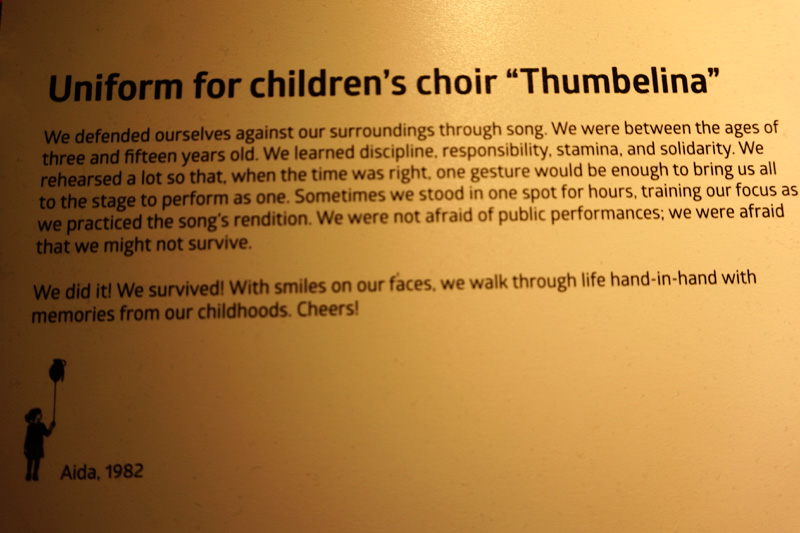
It was a sobering experience, and we walked out of there realising how lucky we are.
As if to match our mood, that’s when the rain came – and it hit hard.
Sarajevo Old Town & Bazaar
I had wanted to explore more of the old town – the bazaar and its markets and cafes along narrow streets were almost fairytale-like, and as we ran from awning to awning, I could feel the history seeping through, from the mosque to the stalls. (Or maybe it was just the water seeping into my shoes from between the cobblestones, who knows?)
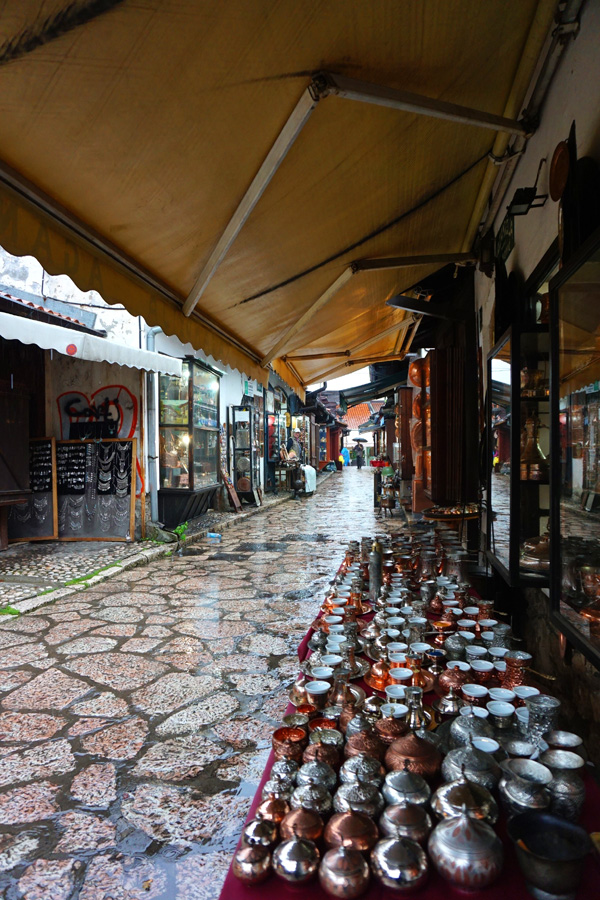
We took refuge in one of the many cafés aligning the streets, and tucked into delicious cakes in the dry.
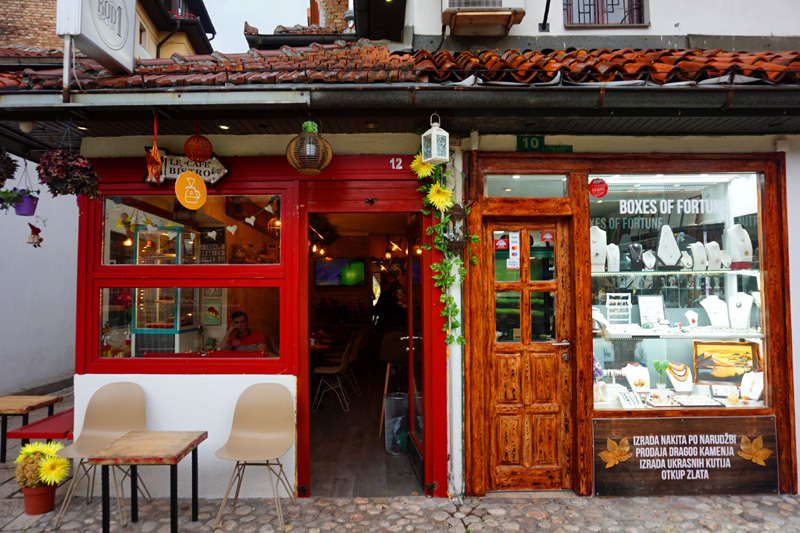
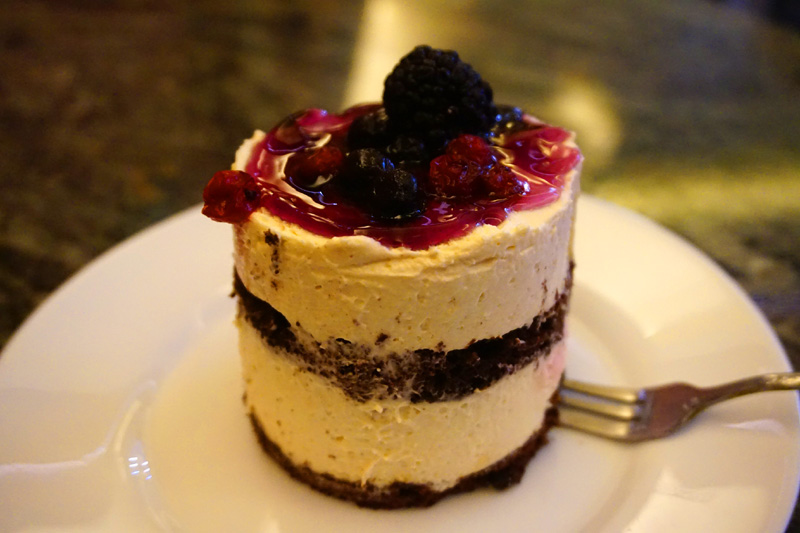
We were about to learn more about Sarajevo’s tough history though – we had a walking tour planned!
Walking tour of Sarajevo
Yep – a good old outdoor walking tour! It was touch and go whether it would even go ahead in this, so let me tell you it’s one of the more memorable walking tours I’ve ever done!! Naturally, I’d left my umbrella on the bus, so I was absolutely soaked before we even started.
The tour was incredibly interesting, and we learned some of the history behind the markets, as well as fun facts like the fact they use three languages in Bosnia (Bosnian, Serbian and Croatian), and everything is translated into all three, despite them virtually being the same language. Our guide gave us an example of warnings on cigarette packets being the same in all of them, so “smoking kills” is just printed three times exactly the same – just to really drill it in!
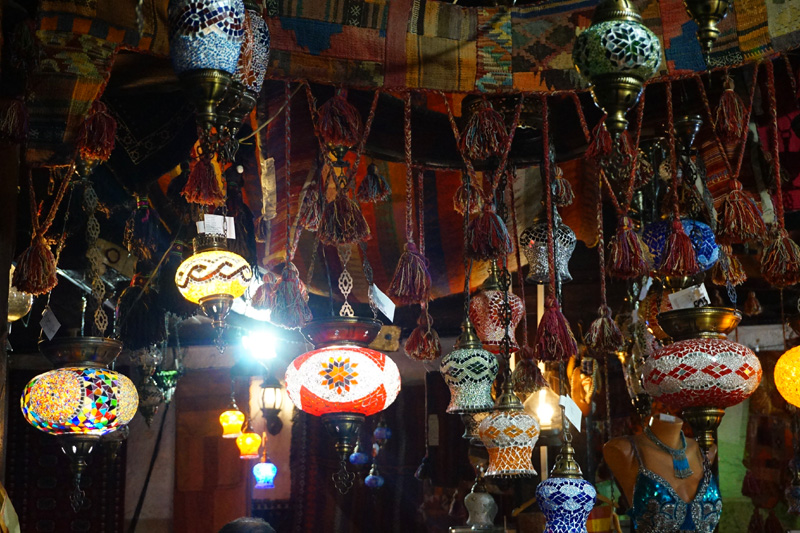
Luckily, some of the markets were indoors to give us some respite from the rain.
After a quick jaunt to the town hall, which soaked absolutely everyone again, we headed to the Latin bridge, where you might have heard of a certain archduke Franz Ferdinand being assassinated.
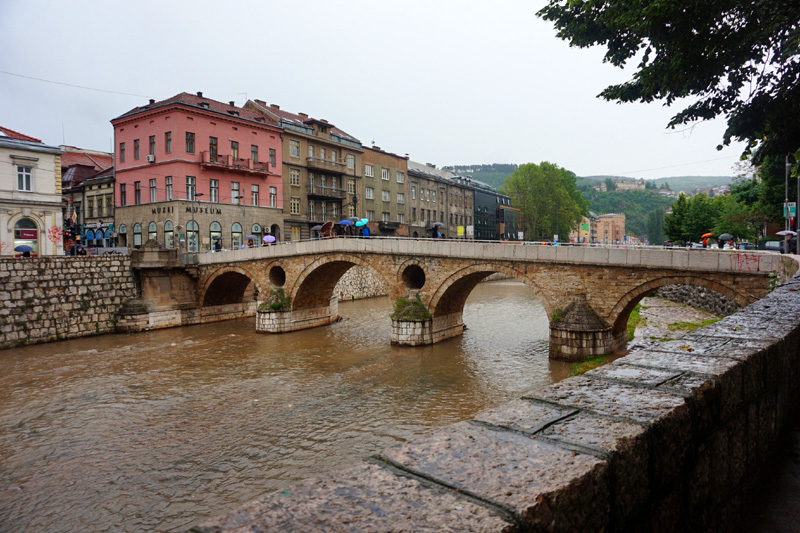
We were given an anecdote about the first failed grenade and the attempted killer jumping into the river with an expired cyanide pill. It couldn’t have gone worse for him – not only did his plot fail, but the river was too shallow, and he was very much caught and arrested!
Franz Ferdinand took a detour from the planned route to visit injured people from the first bomb, and this almost led to a second failed assassination. Instead, the detour led to confusion and the car stopped altogether – and next to the bridge, Franz Ferdinand was killed; a catalyst that led to the first World War. The successful assassin was arrested.
Our tour ended at a church, where a Sarajevo rose marks a tribute to those lost in the war. People leave roses too, but unfortunately, in the rain, it wasn’t anywhere near as beautiful as I’m sure it normally is!
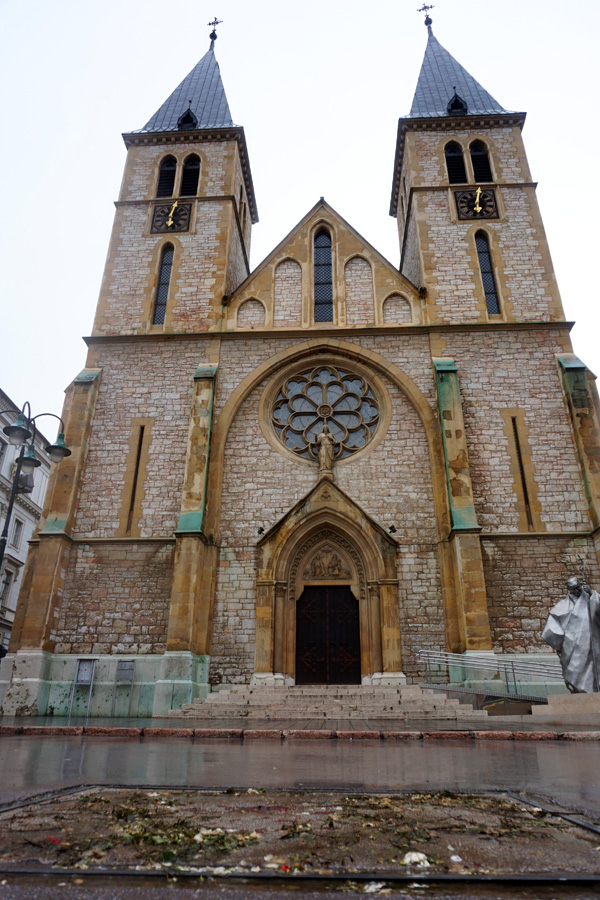
After the tour, we had some more free time, and with the rain finally subsiding, I checked out some more of the markets.
I was surprised once again by some of the architecture here, but while it felt a lot less modern than Belgrade and Sofia, and pretty buildings like this were a lot fewer and far between, everywhere oozed history and character, whether good or bad.
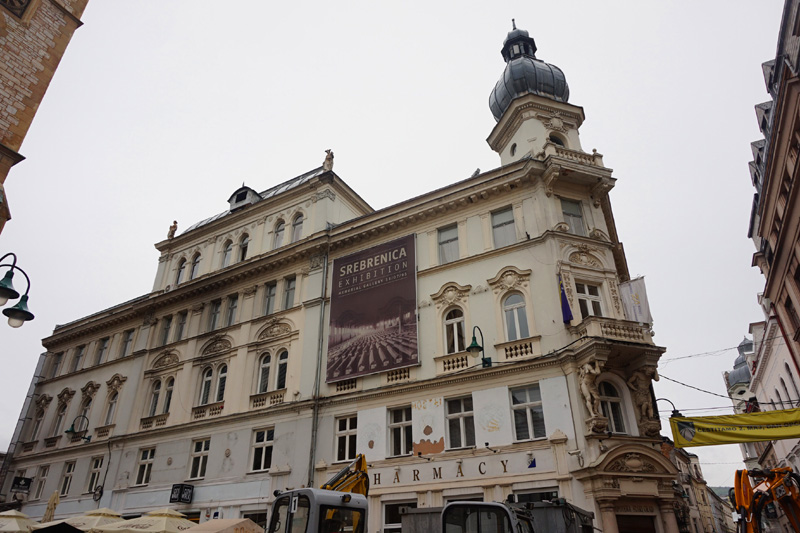
Sarajevo also feels under construction in places, especially the ground. I found loose cobblestones everywhere, and sometimes there was an entire divide which was especially fun while navigating through umbrellas and puddles! You could tell this was a recovering city.
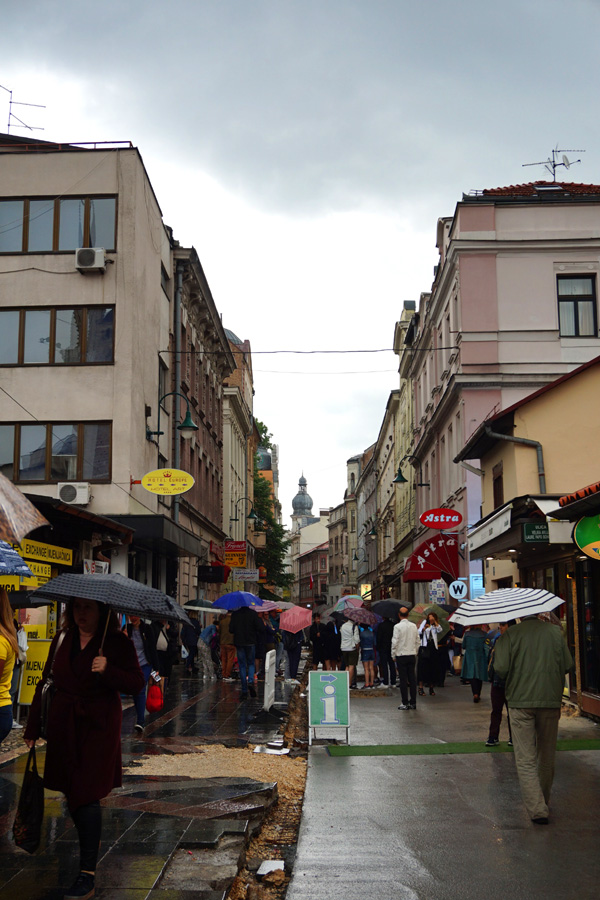
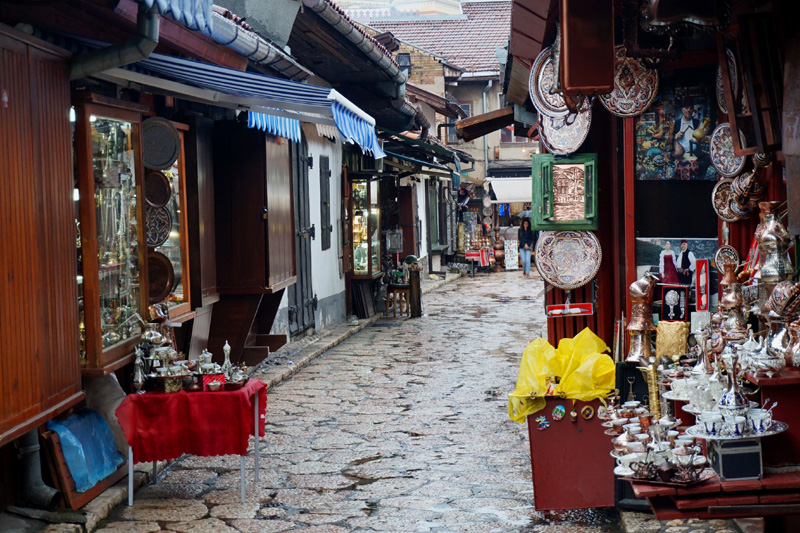
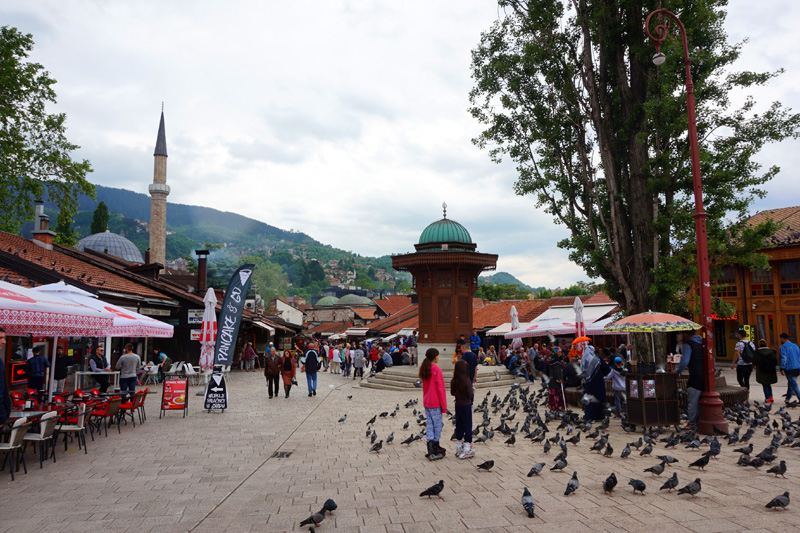
Back at the main square, known as Pigeon Square for some reason I couldn’t fathom as I navigated through the masses of pigeons, we bumped into a group from our tour and after a quick tea / coffee* to warm ourselves up after the rain, we all made a snap decision to go to another museum before we ran out of time.
*Tip: try the Bosnian coffee! I don’t drink coffee but it’s like Turkish coffee in the way it’s served. I wouldn’t have even known what to do with it!
I wasn’t sure if I could handle another one, especially given that this one is called the Museum of Crimes Against Humanity And Genocide. Geez. How’s that for a heavy name?
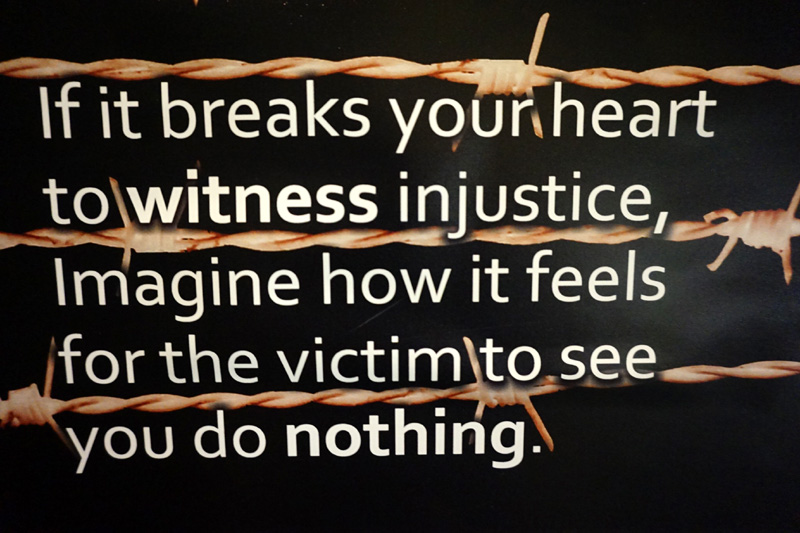
Museum of Crimes Against Humanity and Genocide
It was probably the most important place to visit in all of Bosnia, and I’m really glad I went.
The time, I was reminded more of the War Remnants Museum in Vietnam. This was much smaller, spanning one floor instead of five, but it was just as graphic and hard-hitting.
Like the War Childhood Museum, it was set out in stories from people who lived through the war. There was far less innocence here; no items that gave people their only normal memories and no sugarcoating what had happened to these people. This was full on horror.
But again, there was hope. I didn’t take any photos in the museum because it was all too awful – except this room.
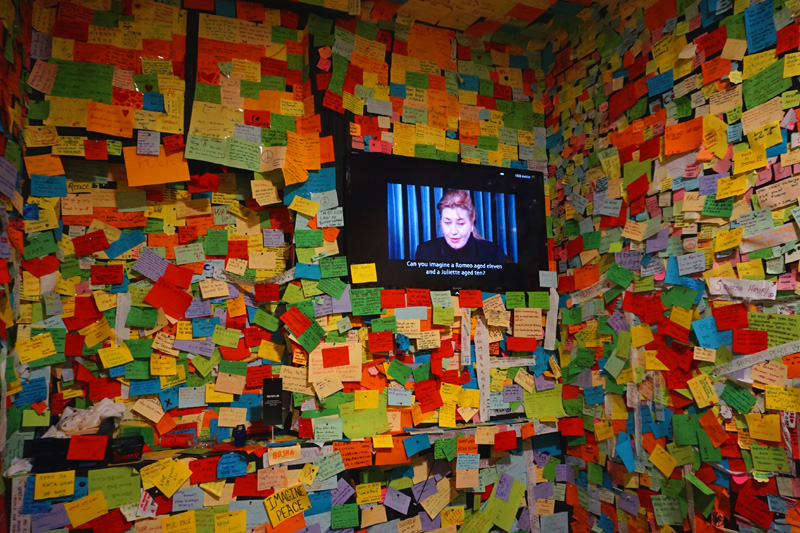
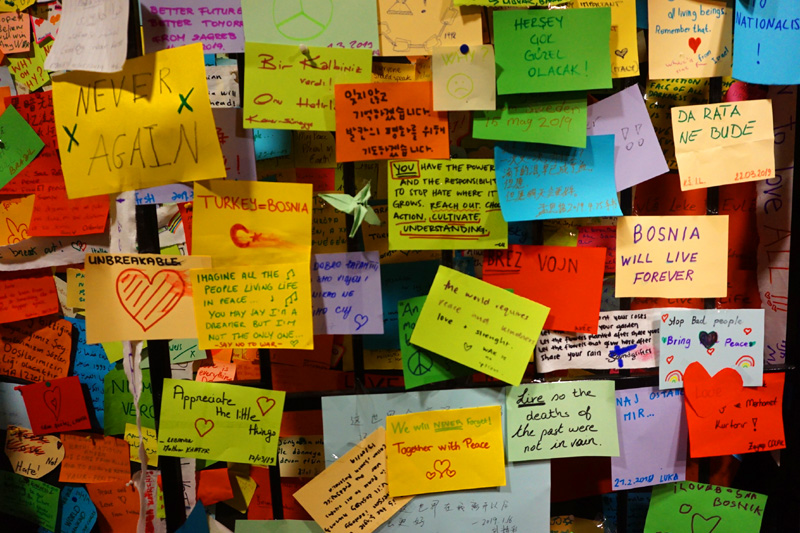
I know museums aren’t for everyone, but I believe it’s really important to visit places like this. To acknowledge that terrible things have happened, because as long as we do, the less likely it is to happen again (and yet here we are with Syria, Ukraine, Yemen…).
Another sobering place to visit and remember atrocities is Auschwitz. Read my guide here and why I think it’s important to visit.
I absolutely loved Sarajevo, and I’m already planning to go back some time. One of the biggest things on my list to do was to go up to the abandoned Olympic bobsled track overlooking Sarajevo – it was going to be tight getting there anyway, but obviously with the rain, there was no way I could (or would want to) traverse a mountain.
So it’s a perfect excuse to go back with Ash, right?
Anyway, I realise this has been a heavy post. So to continue my theme of the Balkans being colourful, here’s a more cheerful photo to end this post with.
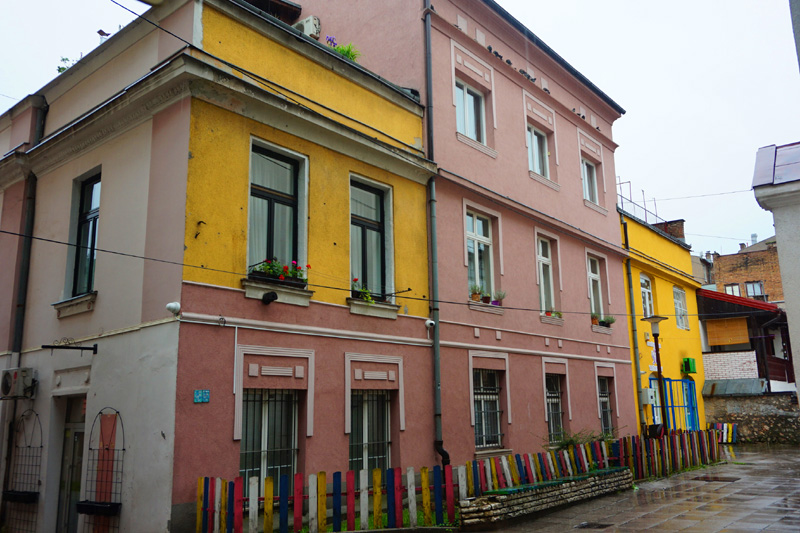
What’s the hardest place you’ve visited? Would you recommend it?
While you’re here, do you fancy reading more about my Balkans trip? Here are some of the highlights:
⭐ Sofia: A City Of Colour And Contrast
⭐ Exploring Beautiful Belgrade
⭐ Mostar: The Gem Of Bosnia
⭐ Surviving Dubrovnik – And Falling In Love With It
⭐ Hiking & Heating Up In Kotor, Montenegro
⭐ Adventures In Albania: Two Hours In Tirana Is Not Enough
⭐ Sunshine, Lakes & Statues In North Macedonia
Like this post? Pin it to read later!
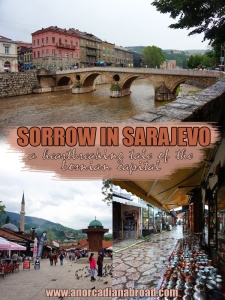
Discover more from An Orcadian Abroad
Subscribe to get the latest posts to your email.

Sarajevo sounds like a sad, but humbling place. Museums might not be for everyone, but sometimes, it really pays to visit to learn more about the country’s history. It’s really sad what happened in Bosnia’s past, and it’s unfortunate that it’s often overlooked in European history. I didn’t visit Sarajevo when I was in Bosnia, but I hope to go some day to discover more about its history. I appreciate your post!
LikeLiked by 1 person
Thanks so much! I totally agree, and I think you can learn a lot about the people from their history, too. We didn’t even learn about it at school, even though it happened in my lifetime. I hope you get to go, although I loved Mostar too!
LikeLiked by 1 person
Wow, great post. Sarajevo looks like such a beautiful city with such a deep and dark history. Those museums both look so profound and I really hope to visit one day. My partner and I are living in Prague this year and hope to explore more of the Balkans – adding Sarajevo to the list for sure!
LikeLiked by 1 person
Thank you! Where are you planning to go? I’ve got a few more Balkans posts coming up – Bosnia was one of my favourites (definitely recommend Mostar too) and another highlight was Montenegro! Really enjoyed the whole area and there are a few bits I’d love to explore more of. 🙂
LikeLike
Awesome! Looking forward to reading them. We were looking at a bit of a road/train/bus trip through Slovenia, Croatia, Bosnia and Montenegro.
LikeLike
Oh fab!! That was sort of my plan before I decided to do this tour! Slovenia is pretty much top of my Europe list now.
LikeLike
You are right, I definitely think that even if someone isn’t a museum person, they should visit some of these historical museums to see the real dark history that occurred in a place. That way the lives of the people who were lost are not forgotten.
I went to school with a guy who came to Canada from Bosnia in the ’90s. It was the late 90’s but he was definitely affected by the war. I am not sure which city or town he came from but the stories he told were heartbreaking. This post made me think of him!
LikeLiked by 1 person
Oh wow, that must have been really interesting. And absolutely, it’s like a tribute.
LikeLike
Sounds like a really heavy trip. It’s good to count our blessings after learning about horrid things mankind has done to each other!
LikeLiked by 1 person
It definitely puts it into perspective, that’s for sure. This was the toughest stop on the trip, but other places bore marks too. Such a beautiful area of the world though, I recommend it.
LikeLike
Interesting read! It’s always wonderful to see this side too when you travel, rather than only witnessing the good.
LikeLiked by 1 person
Yes! I think it’s important to acknowledge things like this. Makes you appreciate the good things more, too. 🙂
LikeLike
What an experience- I can imagine it must have been very emotional. But you’re so right – these kinds of things have a way of showing us how blessed and fortunate we truly are! We can only hope that the human race has learned from times like these!
LikeLiked by 1 person
You would really hope so! 😦
LikeLike
Visiting that museum must have been heart breaking! I do love that you wrote about it and gave us little details on the children’ s toys. I would have cried my eyes out.
LikeLiked by 1 person
I had to really try not to! I walked out of both museums with a huge lump in my throat. 😦 Definitely puts it into perspective.
LikeLike
The tears started flowing before I finished reading the first paragraph. I remember watching helplessly as the war in Bosnia and Croatia unfolded on our tv screens in 1992. The one image that sticks in my mind and one that I will never forget is of emaciated Bosnian Muslim men behind a concentration camp fence that became the Time magazine cover in August 1992.
I would love to visit and see how they have rebuilt their lives without knowing what happened to their missing loved ones even now, 24 years after the war ended.
LikeLiked by 1 person
Oh bless you, I was really young (I would have been 3 when the war started) so I don’t *remember* it like that, but it’s still terrifying that it happened in my lifetime. It was really interesting to visit and find the Bosnian people so friendly and so inclusive (churches opposite mosques etc). They may have had problems in the past, but they could teach us a lot about different people living together.
LikeLike
Wow thank you for sharing! I had no idea!
LikeLiked by 1 person
Thanks Angela. It was pretty sobering!
LikeLike
This was such an interesting post and sop heartbreaking. I had similar feelings when I visited Belgrade and saw the effects the war had on the city.
LikeLiked by 1 person
Thanks Rebecca. Yeah, Belgrade certainly had some signs of destruction too, but the centre was very pristine which actually surprised me.
LikeLike
Those two museums you visited in Sarajevo are vital in letting know the future generations on the horror of war and genocide. A nicely written piece, poignant yet enlightening!
LikeLiked by 1 person
I totally agree! I think we could learn a lot from it. Thanks so much for reading.
LikeLiked by 1 person
Fascinating, harrowing and moving, Clazz. Well written too. I don’t know how anyone can go anywhere without popping into the odd museum.
LikeLiked by 1 person
Thank you! I totally agree with you. I love learning about the place I’m in, especially when it’s got a history like this. I think it’s especially important to acknowledge what has happened in the past too.
LikeLike